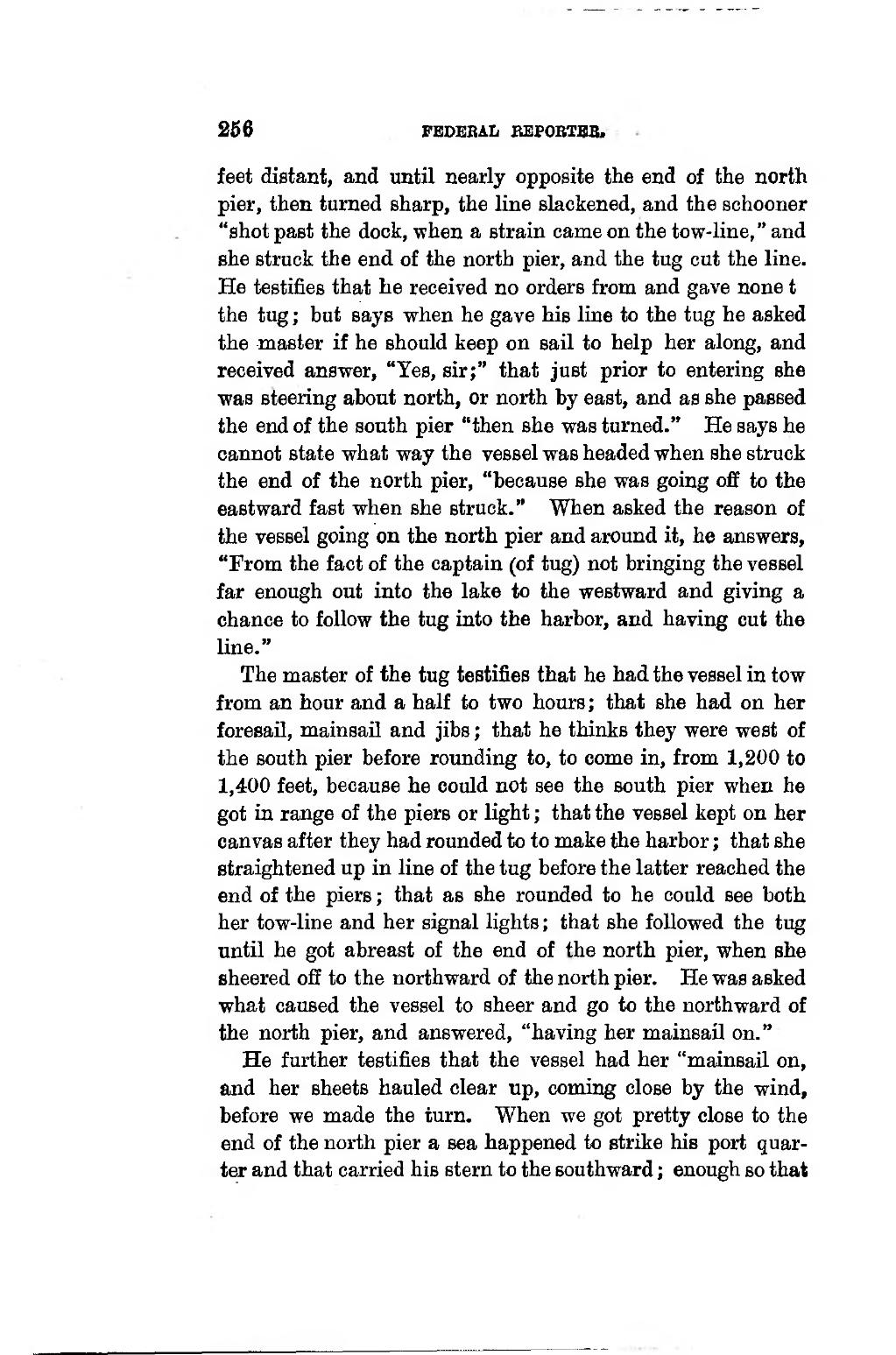256 FEOEBAL BEFOBTSB. �feet distant, and until nearly opposite the end of the north pier, then turned sharp, the line slackened, and the schooner "shotpast the dock, when a strain came on the tow-line," and she struck the end of the north pier, and the tug eut the line. He testifies that he received no orders from and gave none t the tug ; but says -when he gave his line to the tug he asked the master if he should keep on sail to help her along, and received answer, "Yes, sir;" that just prior to entering she was steering about north, or north by east, and as she passed the end of the south pier "then she was turned." He says he cannot state what way the vesselwasheadedwhen she struck the end of the north pier, "because she was going off to the eastward fast when she struck." When asked the reason of the yessel going on the north pier and around it, he answers, "From the fact of the captain (of tug) not bringing the vessel far enough out into the lake to the westward and giving a chance to foUow the tug into the harbor, and having eut the line." �The master of the tug testifies that he had the vessel in tow from an hour and a half to two hours ; that she had on her foresail, mainsail and jibs ; that he thinks they were west of the south pier before rounding to, to corne in, from 1,200 to l,eOO feet, because he could not see the south pier when he got in range of the piers or light ; that the vessel kept on her canvas after they had rounded to to make the harbor ; that she straightened up in line of the tug before the latter reached the end of the piers ; that as she rounded to he could see both her tow-line and her signal lights; that she foUowed the tug until he got abreast of the end of the north pier, when she sheered off to the northward of the north pier. He was asked what caused the vessel to sheer and go to the northward of the north pier, and answered, "having her mainsail on." �He further testifies that the vessel had her "mainsail on, and her sheets hauled clear up, coming close by the wind, before we made the turn. When we got pretty close to the end of the north pier a sea happened to strike his port quar- ter and that carried his stern to the southward ; enough so that ����
